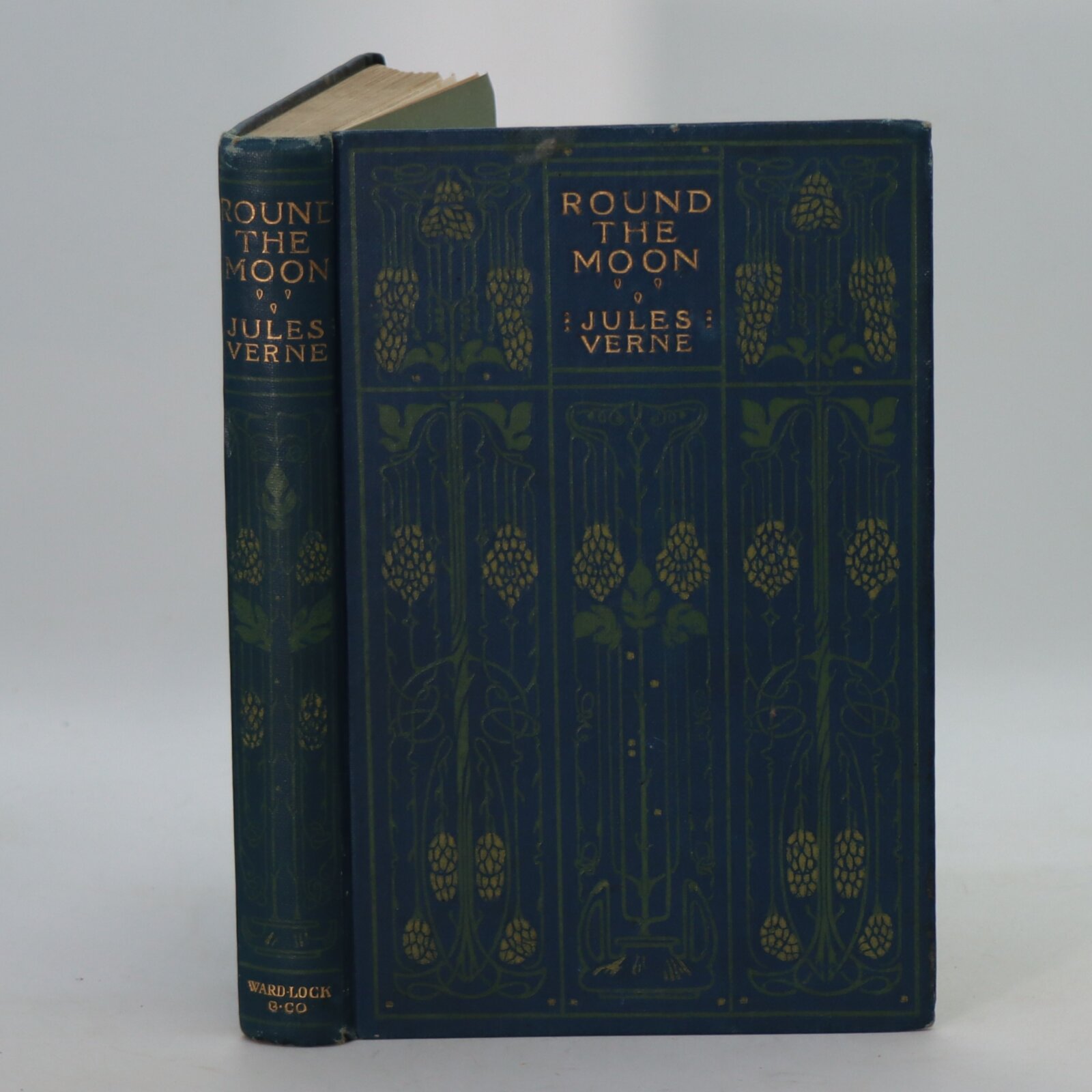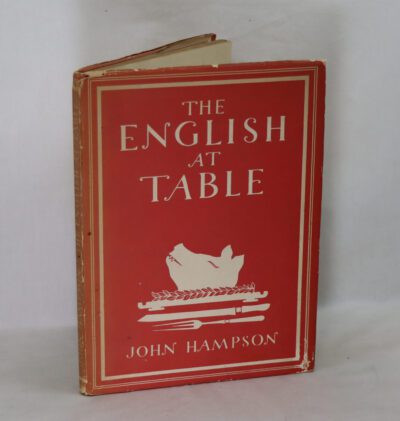Round the Moon.
By Jules Verne
Printed: Circa 1905
Publisher: Ward Lock & Co. London
| Dimensions | 14 × 19 × 2.5 cm |
|---|---|
| Language |
Language: English
Size (cminches): 14 x 19 x 2.5
Condition: Very good (See explanation of ratings)
Your items
Item information
Description
Blue cloth binding with green and yellow art deco style design and gilt titles.
F.B.A. provides an in-depth photographic presentation of this item to stimulate your feel and touch. More traditional book descriptions are immediately available.
Around the Moon : Autour de la Lune, 1869), also translated as Circling the Moon and All Around the Moon, is the sequel to Jules Verne’s 1865 novel, From the Earth to the Moon. It is a science fiction tale which continues the trip to the Moon that was only begun in the first novel. Later English editions sometimes combined the two under the title From the Earth to the Moon and Around It.
From the Earth to the Moon and Around the Moon served as the basis for the 1902 film A Trip to the Moon.
THE PLOT:
Having been fired out of the giant Columbiad space gun, the Baltimore Gun Club’s bullet-shaped projectile, along with its three passengers, Barbicane, Nicholl and Michel Ardan, begins the five-day trip to the Moon. A few minutes into the journey, a small, bright asteroid passes within a few hundred yards of them, but does not collide with the projectile. The asteroid had been captured by the Earth’s gravity and had become a second moon.
The three travellers undergo a series of adventures and misadventures during the rest of the journey, including disposing of the body of a dog out a window, suffering intoxication by gases, and making calculations leading them, briefly, to believe that they are to fall back to Earth. During the latter part of the voyage, it becomes apparent that the gravitational force of their earlier encounter with the asteroid has caused the projectile to deviate from its course.
The projectile enters lunar orbit, rather than landing on the Moon as originally planned. Barbicane, Ardan and Nicholl begin geographical observations with opera glasses. The projectile then dips over the northern hemisphere of the Moon, into the darkness of its shadow. It is plunged into extreme cold, before emerging into the light and heat again. They then begin to approach the Moon’s southern hemisphere. From the safety of their projectile, they gain spectacular views of Tycho, one of the greatest of all craters on the Moon. The three men discuss the possibility of life on the Moon, and conclude that it is barren. The projectile begins to move away from the Moon, towards the ‘dead point’ (the place at which the gravitational attraction of the Moon and Earth becomes equal). Michel Ardan hits upon the idea of using the rockets fixed to the bottom of the projectile (which they were originally going to use to deaden the shock of landing) to propel the projectile towards the Moon and hopefully cause it to fall onto it, thereby achieving their mission.
When the projectile reaches the point of neutral attraction, the rockets are fired, but it is too late. The projectile begins a fall onto the Earth from a distance of 260,000 kilometres (160,000 mi), and it is to strike the Earth at a speed of 185,400 km/h (115,200 mph), the same speed at which it left the mouth of the Columbiad. All hope seems lost for Barbicane, Nicholl and Ardan. Four days later, the crew of a US Navy vessel, Susquehanna, spots a bright meteor fall from the sky into the sea. This turns out to be the returning projectile. A rescue operation is assembled, intending to raise the capsule from a depth of 20,000 feet, using diving bells and steam-powered grappling claws. After several days of fruitless searches, all hope is lost and the rescue party heads home. On the way back, a lookout spots a strange shining buoy. Only then do the rescuers realize that the hollow aluminium projectile had positive buoyancy and thus must have surfaced after impact. The ‘buoy’ turns out to be the projectile and three men inside are found to be alive and well. They are treated to lavish homecoming celebrations as the first people to leave Earth.
Jules Gabriel Verne 8 February 1828 – 24 March 1905 was a French novelist, poet, and playwright. His collaboration with the publisher Pierre-Jules Hetzel led to the creation of the Voyages extraordinaires, a series of bestselling adventure novels including Journey to the Center of the Earth (1864), Twenty Thousand Leagues Under the Seas (1870), and Around the World in Eighty Days (1872). His novels, always very well documented, are generally set in the second half of the 19th century, taking into account the technological advances of the time.
In addition to his novels, he wrote numerous plays, short stories, autobiographical accounts, poetry, songs and scientific, artistic and literary studies. His work has been adapted for film and television since the beginning of cinema, as well as for comic books, theater, opera, music and video games.
Verne is considered to be an important author in France and most of Europe, where he has had a wide influence on the literary avant-garde and on surrealism. His reputation was markedly different in the Anglosphere where he had often been labelled a writer of genre fiction or children’s books, largely because of the highly abridged and altered translations in which his novels have often been printed. Since the 1980s, his literary reputation has improved.
Jules Verne has been the second most-translated author in the world since 1979, ranking between Agatha Christie and William Shakespeare. He has sometimes been called the “Father of Science Fiction”, a title that has also been given to H. G. Wells and Hugo Gernsback. In the 2010s, he was the most translated French author in the world. In France, 2005 was declared “Jules Verne Year” on the occasion of the centenary of the writer’s death.
Want to know more about this item?

Related products
Share this Page with a friend











